Story
Goals for a Decade: Revisited
What happened and what the Bush Foundation learned from 2008’s “Goals for a Decade” strategy.
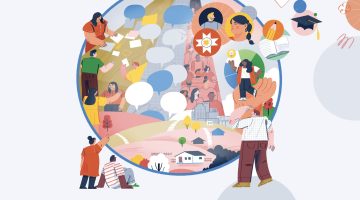
In July 2008, the Bush Foundation announced a major change in strategy. We would shift from funding lots of different issues to focusing narrowly on three goals.
To advance those goals, we would shift from being open to proposals to proactively sourcing long-term partnerships. We set our sights on what we could accomplish by 2018 and called it “Goals for a Decade.” It was a big change.
It was meant to be a disruption and it was. It was a disruption for us and for others. It was a disruption in ways we intended and ways we didn’t intend.
Before launching Goals for a Decade, the Bush Foundation had operated in pretty much the same way for decades. We supported people and organizations working on a broad range of issues. Our primary work was evaluating proposals and making the best decisions we could on which to fund. Staff members prepared, and Bush Foundation board members reviewed, thick binders of funding recommendations.
The people on the board saw other foundations (like the Gates Foundation) operating with clearer strategic agendas and were increasingly asking whether it was time for a change. They were asking whether it was possible for us to have more impact, by focusing more narrowly or by operating in different ways.
Board members recognized that the Bush Foundation is unusual in our independence and flexibility. Because of our endowment, we do not depend on fundraising or government funding. And we have few legal constraints. We have the ability, therefore, to take risks and be creative — and even be controversial — in ways that other organizations cannot.
As the board chair at the time, Kathy Tunheim, puts it, “We saw so many issues in society where we were not making progress. We felt a responsibility to try to do more and to take on more risk, in terms of trying things that might not work.”
When the board hired Peter Hutchinson in 2007 as the Bush Foundation’s third president, they charged him with making the organization more focused and more bold. Peter recalls, “The board wanted to make a bigger difference. To use a metaphor, they saw all the grants as dots in a pointillist painting but weren’t sure they added up to a powerful picture.”
The result was the Goals for a Decade strategy.
The Goals for a Decade strategy changed nearly every aspect of how we operate. Foundations are not known for changing easily, so the degree of change is notable. We struggled, however, to manage that change.
We announced in July 2008 that we would focus our work on three specific goals. First, developing courageous leaders and engaging communities in solving problems. Second, supporting the self-determination of Native nations. Third, increasing the educational achievement of all students.
We hired leaders for each of these three goals and reorganized ourselves into three dedicated teams. We transformed our internal processes — from how we budgeted to our board governance structure — to fit the new approach. We transitioned our existing programs. (The one program we kept, the Bush Fellows program, was changed significantly, combining multiple programs into a single program with a new focus.)
It was a whole lot of change.
Each of the three goals has its own story. Each initiative developed differently with different successes and challenges. We tell short versions of those three stories below.
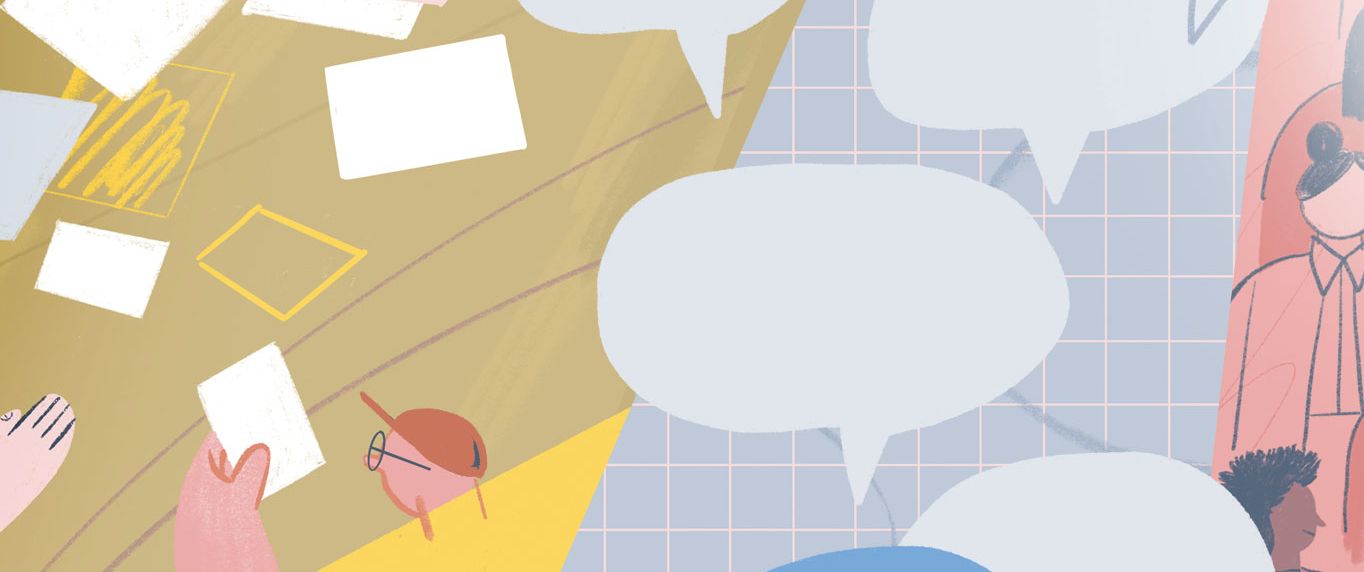
There’s also an overarching story, with successes and challenges. The Goals for a Decade strategy definitely changed us. It changed nearly every aspect of how we operate. Foundations are not known for changing easily, so the degree of change is notable. We struggled, however, to manage that change. We struggled to keep the board and staff aligned on what we were doing. We struggled to keep our communities informed and engaged in what we were doing. We struggled to integrate our three very different focus areas into a coherent whole. And we struggled to figure out how to adapt to changing needs and opportunities in the community.
In 2012, we had a presidential transition. In the interim period, we brought in external program reviewers, who confirmed that we had some fundamental issues in how the rollout of our Goals for a Decade strategy was living up to our intentions. They raised concerns both about the goals themselves and how we were pursuing them, in particular the lack of clear operating principles across all our work. We also knew that people in the community were frustrated with us and not seeing the value of the work we were doing. We took all these concerns seriously.
When Jen Ford Reedy came in as president, her top priority was to resolve those issues in a way that kept the spirit of the goals and kept all the promises the Foundation had made. We shifted our strategic approach significantly, and since 2013 we have not operated under the frame of Goals for a Decade.
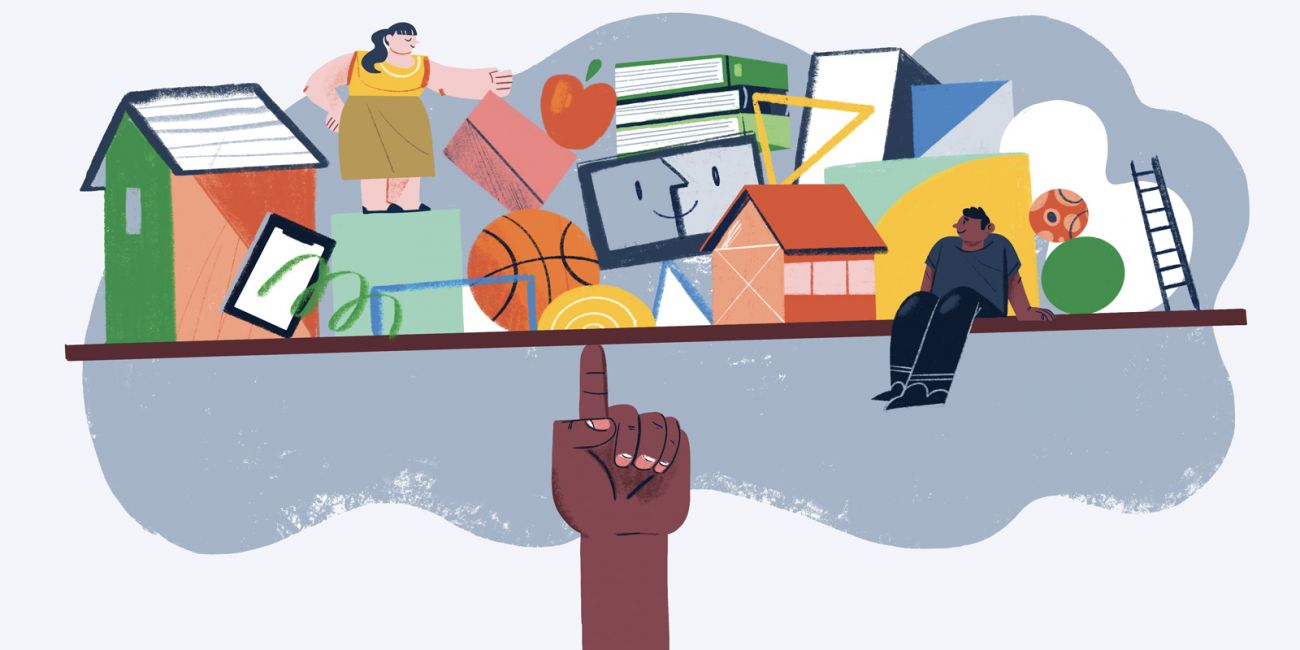
We learned a lot from the risks we took with Goals for a Decade. We learned some tough lessons about how to:
- Set realistic goals.
- Be a good partner.
- Engage people in our work.
- Learn and adapt as we go.
We also learned that we can make a real difference in working toward specific goals. This remains a core part of how we do our work through our strategic initiatives.
At the same time, we learned a lot about the value of the kind of open and responsive grantmaking that the Foundation was doing prior to Goals for a Decade. We came to appreciate how open processes can help us:
Know More: Get to know more people and new ideas.
Overcome Limitations: Overcome the limitations of our own ideas.
Be Relevant: Be relevant to communities.
Stay Relevant: Stay relevant as the world changes.
Build on Passion: Build on community passion and energy.
Do Less: Do less to enable more.
Make Us Smarter and Better: Make us smarter and better in all our work by engaging with more people on more issues in more communities.
That’s why today, at least half of our grant dollars go out through open programs that support people and organizations working on whatever issues they believe are important in their communities.
There is no right way to do philanthropy. You can be focused or broad. You can be proactive or responsive. You can be effective in a lot of different ways.
The biggest lessons of the past decade, to us, have less to do with specific strategy decisions and more to do with how we think about the difference we want to make. How we push ourselves to find the best opportunities for impact. How thoughtfully we balance focus and opportunism and how we manage risk. How we build on our unique assets and engage our communities. And how we align and integrate our efforts to be greater than the sum of their parts.
Goals for a Decade forced us to wrestle with big questions about our impact, which has made us, we believe, a stronger, more adaptable — and more humble — institution.
About the Authors
Every person involved in Goals for a Decade, internally and externally, has their own story of this time. As the authors of this version of the story, we are informed by our own experiences, internal and external evaluations, and interviews with current and former staff and board members. June Noronha was on staff at the Bush Foundation from 2005 to 2016, first as the strategic planning officer and then as part of the Native Nations team. Jen Ford Reedy was an external partner and observer for the first few years of the Goals for a Decade era and then joined the Bush Foundation in 2012 as president.
We use “we” throughout the paper to mean all of the Bush Foundation, although the “we” of the Bush Foundation has changed a lot during this time. When our strategic planning process began in early 2008, none of our current board members were serving on our board and just six of our current staff worked at the Foundation. The “we” is a collective, institutional “we.” Even as we have changed throughout the years, we are still the Bush Foundation.

Developing Courageous Leaders and Engaging Entire Communities in Solving Problems
By 2018, 75% of people in all demographic groups in the three states say their community is effective at solving problems and improving their quality of life.
The original direction from the design labs for this goal was pretty abstract. We had a conceptual definition around “community vitality” as a product of communities that are “insightful, engaged and creative, supported by catalytic leaders.”
As we worked to operationalize the concepts, we got lots of affirmation that the concepts were important.
However, in the first few years we struggled to land on an approach that made sense to staff, board and community.
We named the work toward this goal “Advancing Solutions” and developed an initiative called “InCommons” as our cornerstone strategy. InCommons was intended to be an online community to support and connect people working to solve community problems, complemented by real-world events and trainings. We did a lot of our work in this area under the brand of InCommons.
We revamped our leadership programs. The Foundation had been known for its leadership programs for decades and that work moved under this goal. To better fit our new goal, we consolidated three distinct leadership programs into a single new Bush Fellows Program. The new program was designed to support individuals taking on specific challenges in their communities, a shift away from focusing on leadership development.
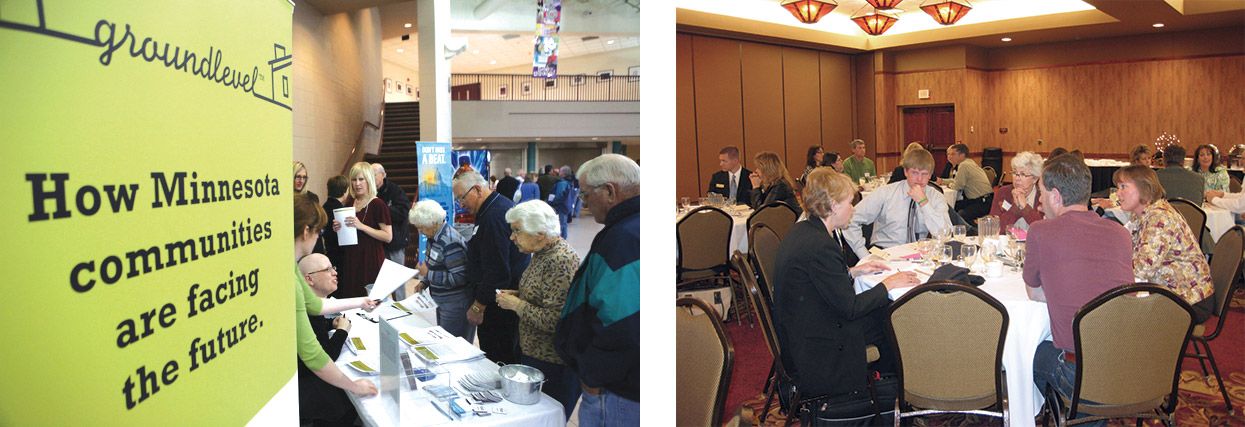
We did lots and lots of other stuff. We co-hosted conversations on end-of-life care and funded an infant-toddler home visiting project in Crow Wing County in Minnesota. We sponsored idea challenges and spearheaded the creation of data indicator projects in North Dakota and South Dakota. We trained people on the Art of Hosting leadership approach and sponsored media coverage of great leaders.
Because we organized our staff and strategy around the three goals, and because the other two goals had very defined strategies, Advancing Solutions became the place where any and all other ideas went to live. We were involved with lots and lots of really cool and valuable work, but it was not clear — internally or externally — what and how we were prioritizing.
Between 2008 and 2012, we spent $47 million on scores of strategies under the banner of Advancing Solutions. When Jen Ford Reedy came in as president, her first order of business was to review all this work and settle on a strategic direction.
In September 2012, we filled all the walls of our boardroom with big Post-it sheets listing all the things we had done within Advancing Solutions. We took a moment to acknowledge all the work and all the impact represented by all those Post-its. We also acknowledged the papered walls as the physical embodiment of our need to prioritize. We lumped the activities into categories, analyzed spending and results on each category, and surveyed stakeholders on how they valued the different activities.
With the board, we decided to split Advancing Solutions into two separate program areas, one focused on supporting leaders (Leadership Programs) and one focused on supporting communities to solve problems (Community Innovation). We pulled the plug on InCommons (read about what we learned from the InCommons initiative) and decided all our future work in this area would be under the Bush Foundation brand to reduce confusion. Rather than focusing on building something to connect people through us, we would support connectedness and community capacity in various ways. One way this is reflected in our current strategy is through our Ecosystem Grants program, which supports other organizations that share our goal of supporting leaders and community problem solving.
Today, the spirit of this goal infuses all our work. We have elevated problem solving to our purpose statement.
Within Leadership, we elevated the Bush Fellows Program as a flagship program and returned it to its roots, a focus on leadership development. In the early part of this strategy we shifted the focus of the Fellowship to investing in projects proposed by individuals, which seemed like a better and more direct fit with the focus on problem solving. However, we found that too few people had time to take on big projects, so the Fellowship became less competitive and less selective and the scope of the projects were necessarily small. In 2013, we refocused the program on the personal development of leaders. Preparing leaders to take on our biggest challenges over the course of their career (versus through a two-year individual project) is, we believe, a better long-term return. We also created other programs to allow us to be useful to more leaders in the region — like event scholarships to send cohorts to national conferences and trainings.
Within Community Innovation, we created a new flagship grant program, the Bush Prize, complemented by Community Innovation grants. These changes allowed communities to get support to solve problems they thought were most important and allowed us to get money out to communities. This change was, in part, an acknowledgement that our operating preference for designing and leading our own initiatives was not well suited for a goal that was about building community capacity.
Today, the spirit of this goal infuses all our work. We have elevated problem solving to our purpose statement. We have tried to adopt the friendly accessibility of InCommons in all our communications and engagement.
While we kept the spirit of the original goal, we stopped using the goal itself. Problem solving is critically important. However, gauging our success by trying to measure improvement in the public’s perception of community problem solving was neither practical nor useful.


Supporting the Self-Determination of Native Nations
By 2018, all 23 Native nations in the three states are exercising self-determination and actively rebuilding the infrastructure of nationhood.
During our 2008 planning process, we did lots of data analysis on issues in the region. We were struck by what the data told us about the intensity of issues within Native communities. While the Bush Foundation had been funding individuals and organizations working in Native communities for decades — most notably with our tribal college faculty development program — we did not have an organizational focus on Native issues.
This goal elevated our commitment to Native communities and focused that commitment on a core challenge for tribes: strengthening tribal governance. We were influenced by 25 years of research in Indian country that indicated strong governance is a primary factor in tribes’ ability to successfully pursue their own goals. We were convinced that addressing any of the economic and community challenges within Indian country (e.g., human services, education, economic development) requires strong governing institutions.
Based on this conviction, we focused on supporting tribes to adopt a “Native nation rebuilding approach,” characterized by strategic decision making, asserting their sovereign authority and backing up that power with effective governing institutions that matched Indigenous traditions and culture.
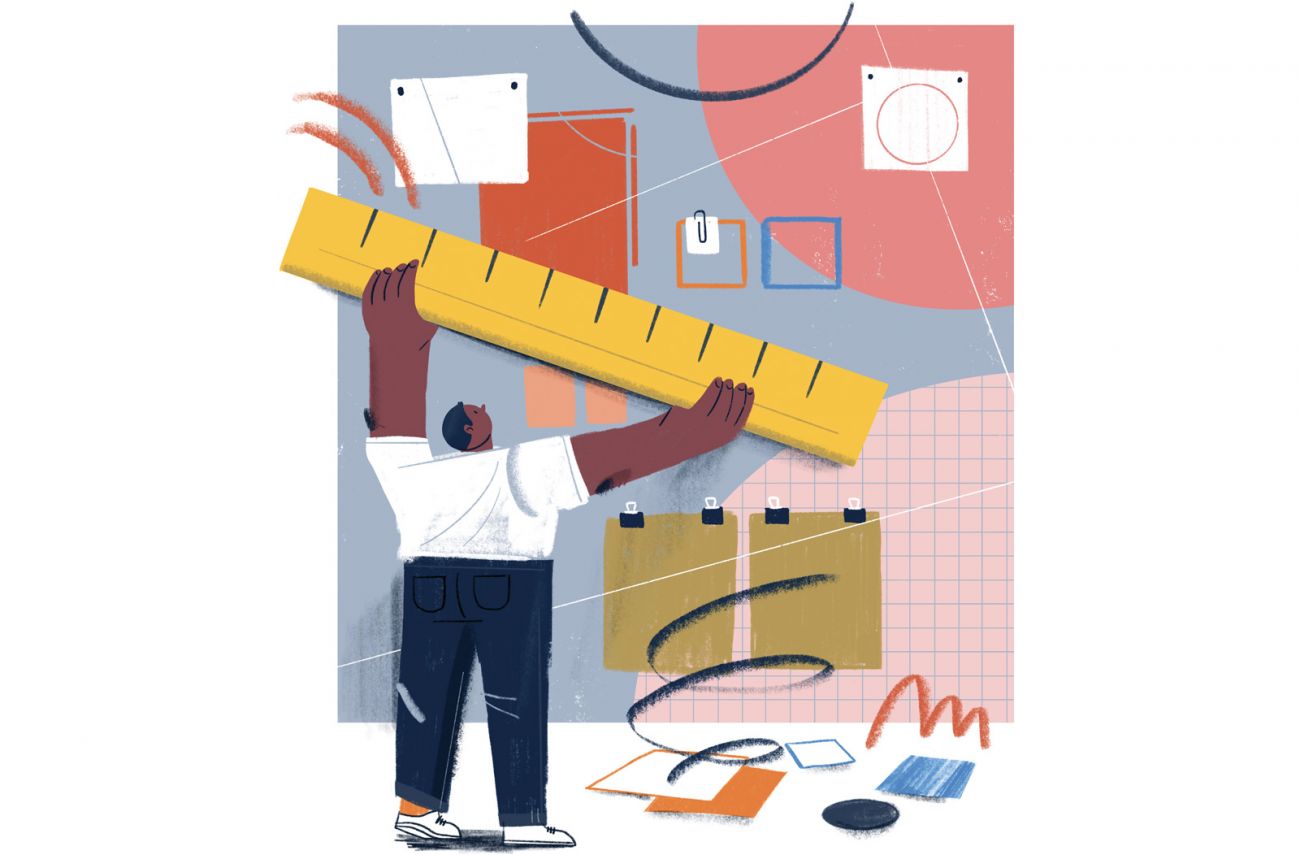
We developed strong operating principles for the initiative, including working with and through elected tribal leadership. It took a while to get tribal leaders interested. We have often used the analogy of standing on the dance floor waiting to see if anyone will dance with us to describe the early part of this work. We spent a lot of time getting to know leaders and attending tribal council meetings throughout the region to explain what we were trying to do. Ultimately, the time and effort we put into relationship building and trust building was a key success factor for the work.
Once leaders were willing to dance, we worked directly with tribes in a number of ways. In partnership with the Native Nations Institute (NNI), we provided on-site nation building education as well as cross-tribe trainings and convenings. Also with NNI, we developed a Governance Analysis for Native Nations (GANN) tool and provided working sessions with tribal leaders to assess the strength of their current governance practices. We also provided direct grants for nation building projects, ranging from updating legal codes to supporting wholesale constitutional reform.
We created the Native Nations Rebuilders program, which proved to be the most powerful strategy of all. The program was designed to train emerging tribal leaders on the principles of nation building. The program created a cross-tribe corps of people energized to apply nation building principles and support each other in their efforts. The success of the Rebuilders has inspired and informed our strategies that invest in people through other areas of the Foundation, as well.
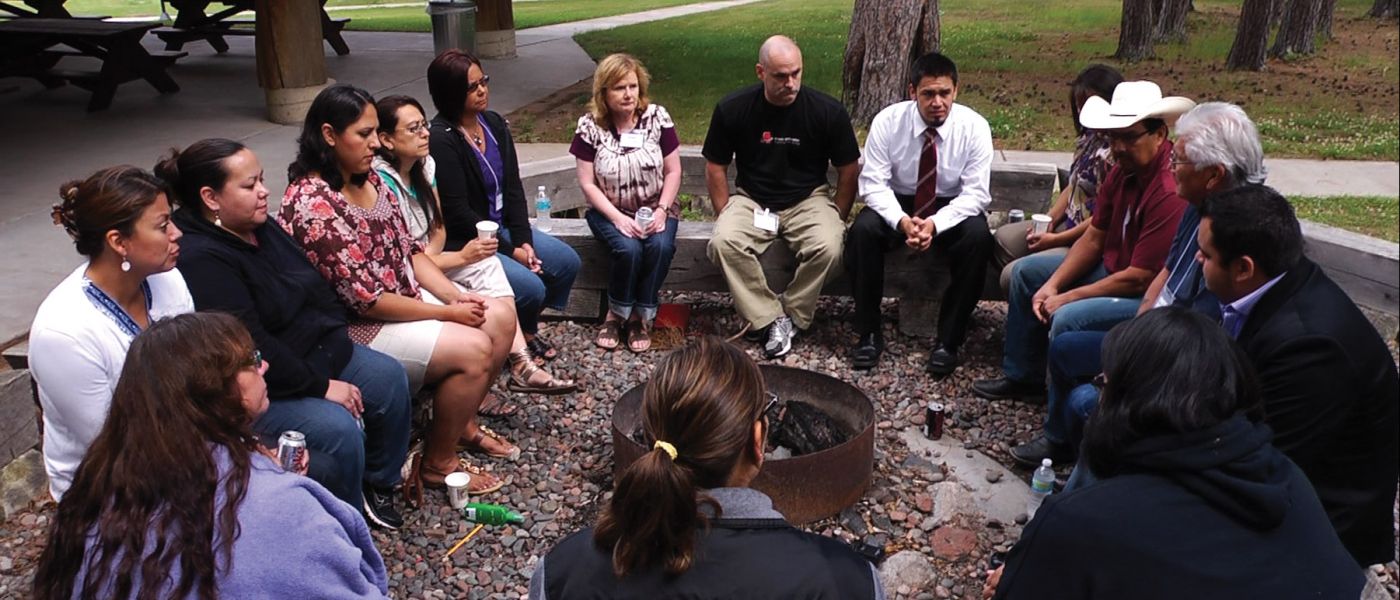
By our mid-initiative external review, we had lots of interest and demand from tribes. The language of nation building had spread — three tribes had even changed their names to “nation.” The Rebuilders program had become a true force for change. We were attracting very talented leaders, well-positioned to influence their tribes. We saw evidence of Rebuilders leading dialogue and action in their communities and moving into elected positions. (Read a summary of the evaluation and our response.)
With all this good news, we saw two big challenges. First, how could we meet the demand for technical support from tribes to move from nation building theory to action? Second, how could we ensure this work — which we recognized would take a generation or more — lived beyond our 2018 goal horizon?
We engaged a consultant to lead a strategy process for us to answer these two questions, guided by an advisory committee of national experts and tribal leaders. Based on the input of stakeholders and exploring models from around the world, the advisory committee recommended the creation of a new, tribal-led entity to provide stronger regional capacity to support nation building. The Native Governance Center (NGC) launched in 2015 and is now fully operational as a tribal-led institution. (Read what we learned while creating NGC.)

Our tight focus on governance and only working through elected tribal leaders of the 23 nations was a strength of the effort in some ways. It also meant that our investment opportunities were limited, and we frequently were under budget with the effort. In the decade between 2009 and 2018, we made just over $18 million in grants to support nation building. During the early years of the initiative, this was the only Bush Foundation funding that was supporting Native nations and communities, and people were frustrated that there weren’t other opportunities. Now, while our work on tribal governance and supporting NGC is still a significant commitment for us, we support Native organizations through a variety of programs and initiatives. (See our 2018 report on our funding to Native American people and causes [PDF].)
We are also exploring ways to build out from our Native nation building work to have an impact in government more broadly. We are particularly interested in how we can support leaders in state, county and city government to better understand and design for the needs of the people they serve.
We have now worked in some capacity with leaders of all 23 tribes. We cannot say that we have met our stated goal — not all 23 tribes are actively rebuilding the infrastructure of nationhood. We can say that exciting work is happening throughout the region and we remain committed to the spirit of the goal.

Increasing Education Achievement
By 2018, the percentage of students, from pre-kindergarten through college, who are on track to earn a degree after high school increases by 50% in the three states and disparities among diverse student groups are eliminated.
Within this big goal we quickly focused on the importance of effective teachers and got to work.
We set a goal-within-the-goal of producing 25,000 new, effective teachers by 2018 and pledged $40 million to help make it happen. We called our strategy the Teacher Effectiveness Initiative.
We chose 14 higher education institutions to form what became the Network for Excellence in Teaching (NExT) to transform the way they recruit, prepare, place and support new teachers.
We signed memos of understanding with each NExT partner, in which they agreed to produce a certain number of teachers and to guarantee their effectiveness. The Bush Foundation agreed to provide funding, expert coaching and NExT network support and then to pay a $1,000 bonus per “effective teacher” produced.
We defined an effective teacher as a teacher whose students experience at least one year’s academic growth in a year. The Bush Foundation took on the responsibility of assessing effectiveness of the teachers through value-added analysis. This required the ability to assess student growth over time, link those students to teachers and then link those teachers to the school that prepared them.
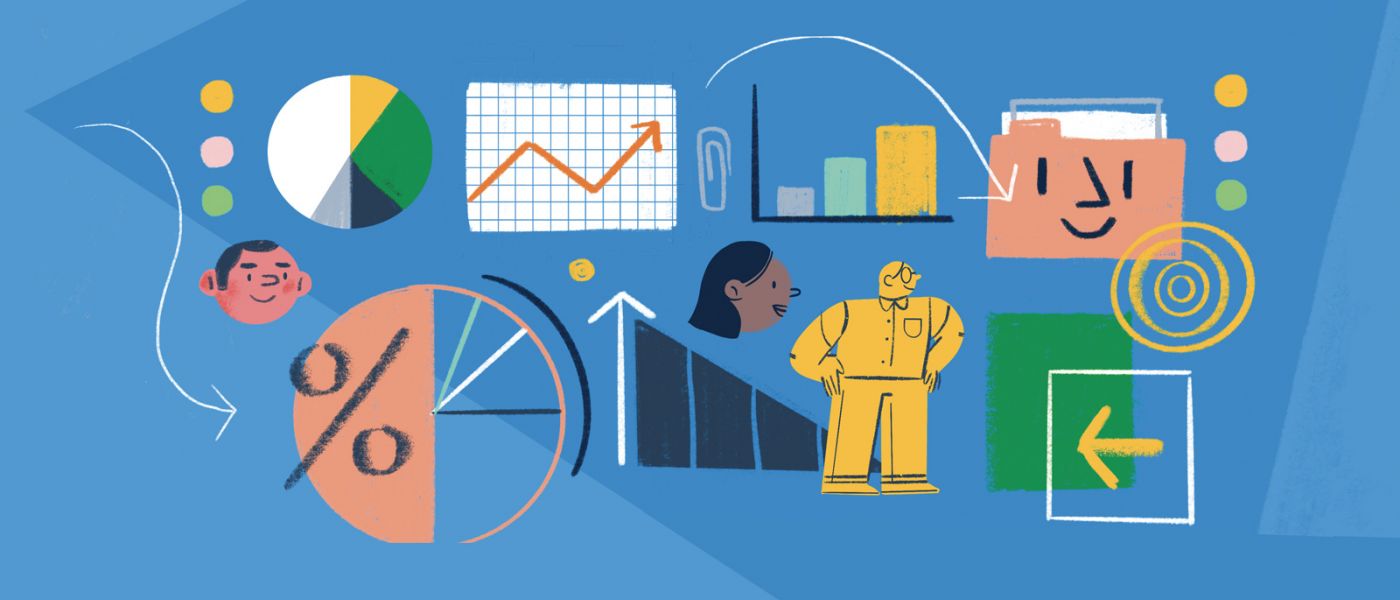
From the outset, the level of progress varied significantly across partners — with some dreaming big and making truly transformational changes and others changing very little. The level of funding we provided varied a lot across the institutions depending on whether they were funded individually or as part of a consortium, which obviously was a significant factor in their ability to make progress. There were also differences in the culture and structure of partner institutions that affected their ability to make progress. The biggest differentiator, however, was whether the work was championed by strong and committed leaders who could envision transformative change and who were creative and effective at driving change within complex, often highly political environments.
In 2013, we engaged an external evaluator to assess the work to date. The evaluator noted some real success stories — particularly the introduction of “co-teaching” and the creation of close working partnerships between the institutions and school districts. (Read their report and our response to it.) We added a competitive funding pool for school district partners to help spread those successes. We also saw some persistent challenges — like the recruitment and support of more racially diverse teacher candidates. We added a competitive funding pool for NExT partners to test new approaches to diversifying the teacher pipeline, which led to the development of new alternative pathways and other innovative programs.
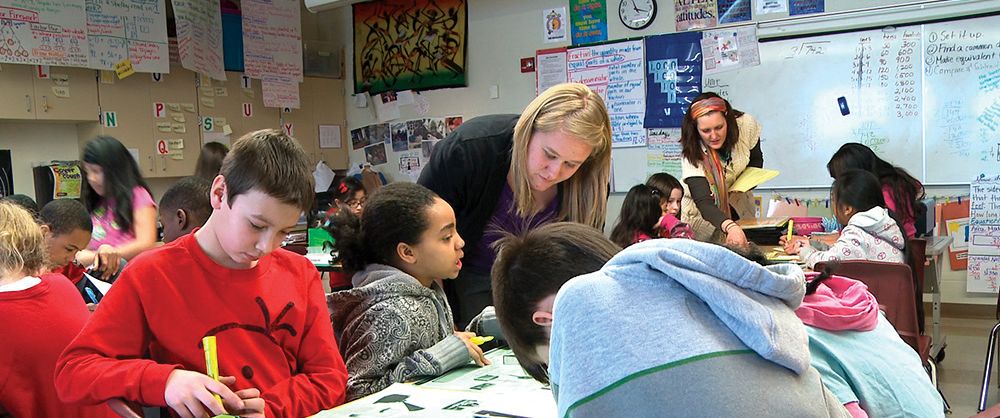
The big elephant in the room at this point was the fact that the whole initiative was based on a guarantee of teacher effectiveness and, despite considerable effort and funding to develop a value-added teacher measurement system, we were unable to develop one. We acknowledged the frustrating reality that we were not going to be able to get a system in place. We didn’t have a Plan B and we needed one. We then renegotiated bonus payments with the individual institutions and provided funding to develop their own capacity to measure teacher effectiveness. (Read more on what we learned about data in teacher effectiveness.)
It’s interesting to note that, while we viewed this as a failure on our part, our partners reflect on this as a positive, representing a shift in developing real trust and partnership between the Bush Foundation and the institutions. The institutions formed a common metrics work group that created valid and reliable surveys to compare the effectiveness of their graduates. This work, regarded as groundbreaking in the field, has expanded statewide in Minnesota and North Dakota and has sparked interest in other states.
We did not intend for the Teacher Effectiveness Initiative to be the only education strategy within this goal — we imagined it as a first strategy. However, it was so big and complex to manage that it became all consuming. About halfway into the effort, we began to ratchet back our direct staff support of the initiative and then were able to open up our education work to other ideas and strategies.
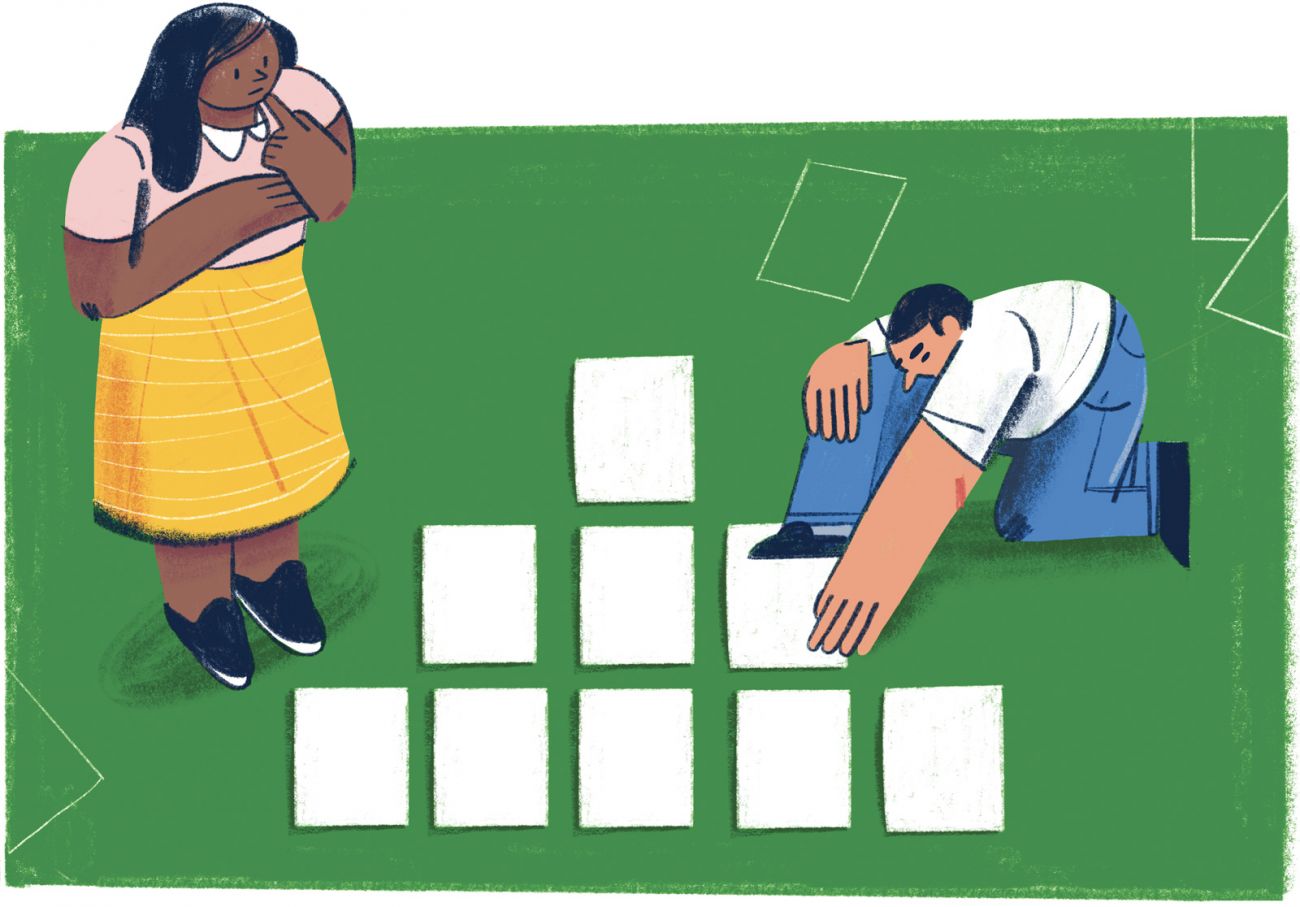
In 2015, we held an open call for ideas to advance our original goal around increasing educational achievement. This open process allowed us to explore a lot of ideas and engage with a number of education stakeholders, to refine our thinking on the best way for us to make an impact. (We also invested $16 million in seven big ideas that came in through the open call.) This learning process led us to our current education guiding goal focused on individualizing education to better meet the needs of all students.
We continued our support of the Teacher Effectiveness Initiative through our decade-long commitment and invested a bit more than the $40 million we pledged. Grants are still in place until 2020 and there is ongoing collaborative work among the institutions. We certainly did not achieve the goal of eliminating racial disparities in education outcomes. We also did not achieve our goal-within-the-goal of producing 25,000 measurably effective teachers — both in terms of quantity or in terms of our ability to measure value-added effectiveness. This goal was problematic in a number of ways, such as by leading us to focus on scale at the expense of focusing on the highest-need kids.
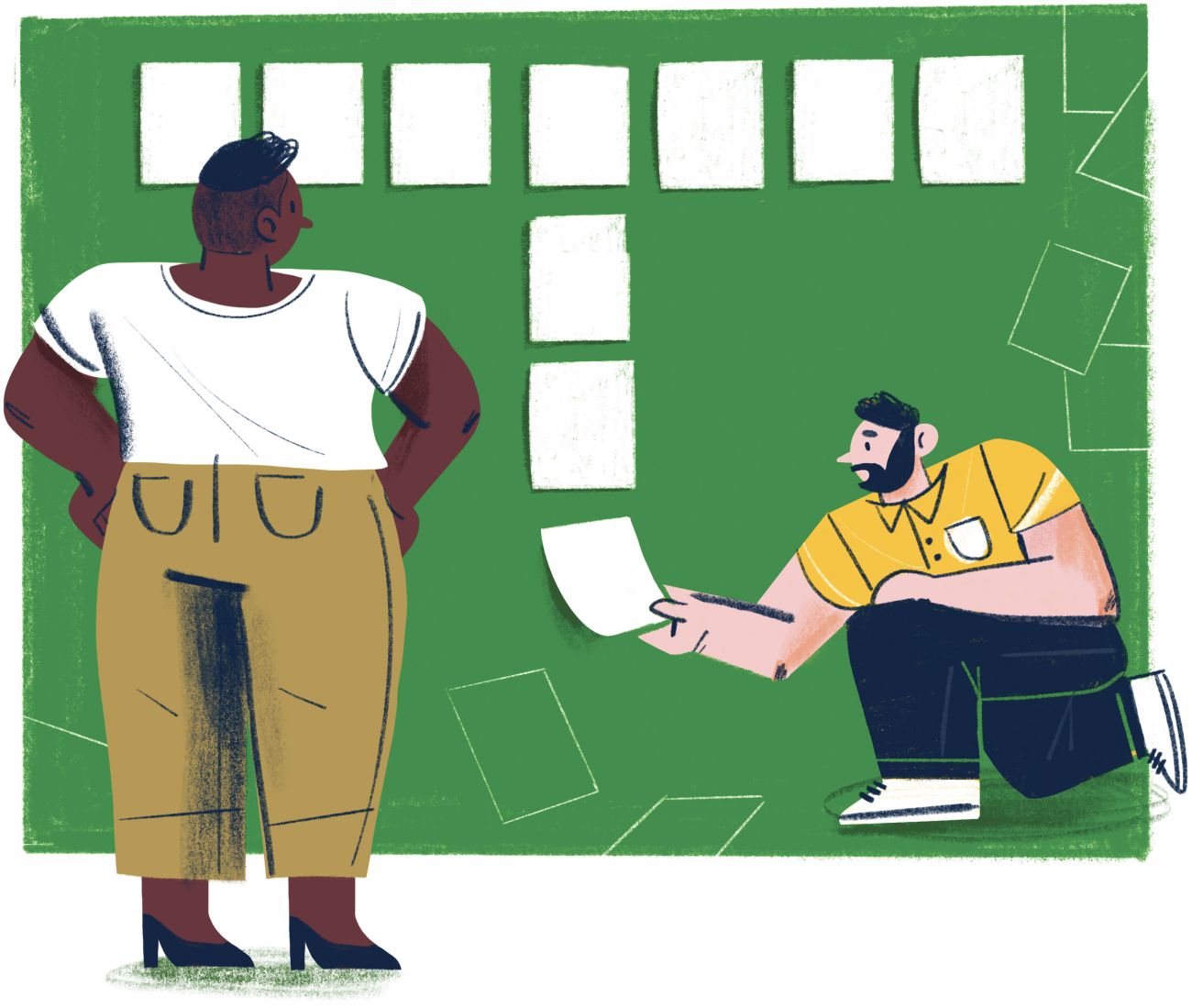
We learned a lot of lessons that inform our current work across the Foundation — like the value of learning cohorts and the power of making targeted investments of additional resources to spread successes and overcome challenges. We saw some of our partners make wonderful and transformative changes. They made the most of our long-term funding commitment and other supports. They defied conventional wisdom about higher education institutions being change-resistant. We are proud of what we helped to make happen! We also learned the risks of putting all our eggs into one strategic basket and locking ourselves and our partners into contractual agreements. In all our work, we want to work toward a big vision and make bold investments, but we also want to make sure we are learning and adjusting as we go.
What We Learned
Lessons in Change Management
As we launched Goals for a Decade, we struggled to match the strategy’s scale and pace of change with our capacity to manage the change.
We moved fast. Really fast. We went from beginning strategic planning to public announcement of an entirely new strategy in about six months. And the rollout of the new strategy involved changing a lot: We changed all our programs, nearly all our internal processes and most of our people. We had to use new skills and capacities without really having time to develop and practice them. And then we had to move quickly to get the new initiatives up and running to get money out the door.
It is hard to do change quickly and do change well. Sometimes you have no choice but to change quickly, but we did have a choice. We could have been more patient.
If you read a change management textbook, it will lay out a bunch of critical elements for successful change — like careful sequencing and stakeholder communications and establishing clear operating principles and ensuring strong governance processes. We did not do these well. As we look back on the early days of Goals for a Decade, all these critical elements became secondary considerations to getting the work done at the pace we had promised.
It wasn’t that we didn’t know they were important. If you look at our internal planning documents from that time you will see we knew they were important. Ours is not a lesson on intention. It is a lesson in being realistic and building in the time and the capacity to work the way you mean to work.
Lessons for Philanthropy
Beyond the importance of good change management, our experience highlights some important challenges in smart philanthropic strategy. Here are our top three:
Designing for optimal strategic flexibility
After launching Goals for a Decade, we had new ideas of how we could have an impact. But we had publicly locked ourselves into those three goals and had built our whole staff structure around them — we didn’t have any cross-organizational program capacity. At the goal level, we locked ourselves in too tightly in some areas and had too little strategic structure in others. Our experience demonstrates the importance of designing clear, focused organizational and program-level strategies while also allowing room for learning and adapting to changing realities.
Matching goals and strategy
Goal setting is a perennial challenge in foundations. Our experience with Goals for a Decade shows why it is so hard. If your goal is too big it can be wholly unrealistic for the resources and influence you have. If it is too focused it can constrain your tactics. If it is too vague you may struggle to prioritize. An emphasis on meeting quantitative targets can affect quality and impact. Relying too heavily on the buy-in of others can slow and limit the process. We struggled with all these goal-related challenges in different parts of the Foundation. We intended the goals to be an accountability measure — for us and our partners. But in reality, we did not set the goals in a way that allowed for internal or external accountability.
Being permeable
In the first years of Goals for a Decade, we were essentially operating initiatives in our pursuit of the goals. In doing so we became our own largest strategic constraint. Planning and executing the work at a pace to keep money flowing out to the community (and meet our IRS requirement for spending) was difficult. It was also difficult to be relevant in all corners of the region and to fund the best ideas without having ways to solicit and consider outside ideas. Our website invited people to share ideas that aligned with our strategy, but there was no clear way to do so. While we talked a lot about co-creation, in practice it was hard to develop and nurture true partnerships with organizations given our very specific agenda, the speed at which we were moving and the power dynamics in funding relationships. In the past several years, we have changed both our mindset and our processes to become much more permeable to ensure we are not limited by our own knowledge and capacity. (Check out our learning paper “No-Moat Philanthropy.”)
Continue reading
-
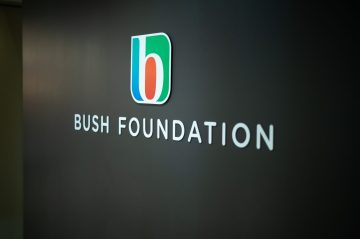
News
Opportunity to work with us
As part of our office move later this year, we are exploring possibilities for the build out of the ground floor of the building. We are in the early stages of this and considering different types of operating models and potential partnerships.
-
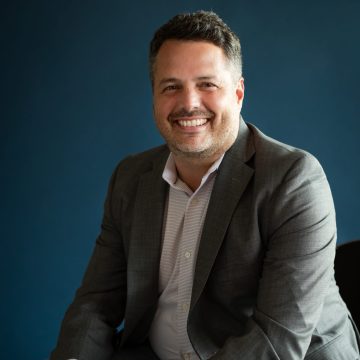
News
Staff note: Making every dollar work through impact investing
We have benefitted from the experience of other funders as we developed our impact investing approach. Now we are paying it forward and sharing what we have done and what we have learned.
-
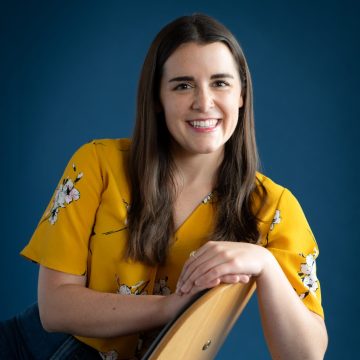
News
Staff note: Coordinating the work of our contact hub
We aim to be radically open in all that we do, and that includes being more accessible to more people and sharing what we learn along the way.